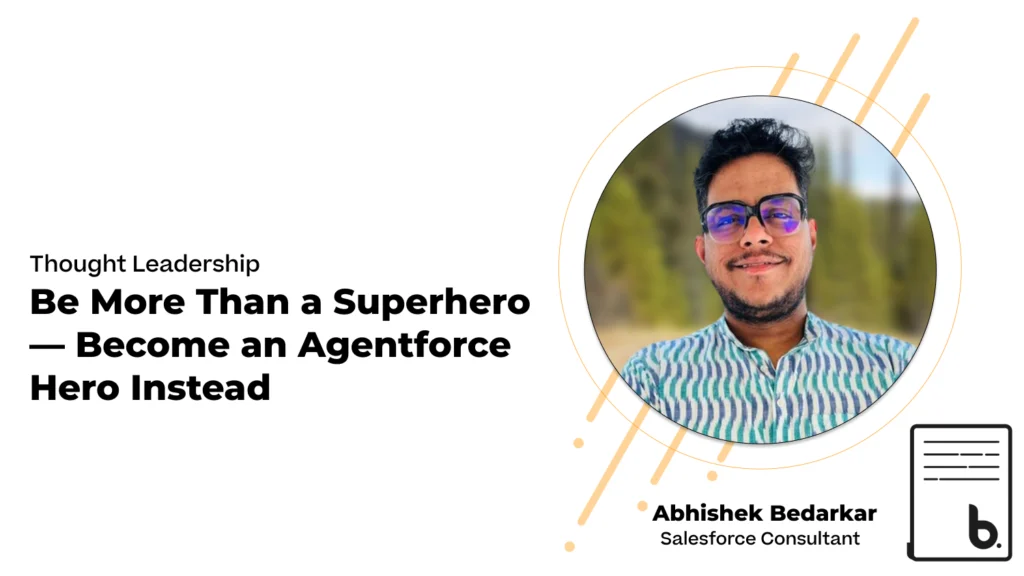
Back in 2016, Salesforce launched Einstein to bring AI into everyday CRM work. Fast forward to today and we’ve got Agentforce — a platform for autonomous AI agents that can answer questions, take action, and work across your systems around the clock. Think of Agentforce as your team of digital specialists that understand context, use your data, and trigger real business workflows — not just generate text.
Quick take: Agentforce is not just a rename of “Copilot.” Salesforce has folded the assistive copilot experience into Agentforce Assistant, while Agentforce is the broader agent platform that reasons, takes actions, and scales across departments. SalesforceSalesforce
What is Agentforce? (and how it’s different from a chatbot)
Agentforce lets you build autonomous AI agents for sales, service, marketing, commerce, and ops. These agents can hold a conversation, look up or combine data, and kick off real actions (Flows, Apex, APIs, prompt templates). The result: faster case resolution, cleaner data, happier customers, and fewer repetitive tasks on your plate. SalesforceSalesforce+1
Traditional chatbots usually follow scripted flows and need hard-coded Q&A. Agentforce agents use reasoning to choose the right topic, follow instructions, and execute the proper action — end to end. Salesforce
How Agentforce actually works (the simple version)
1) Atlas Reasoning Engine
This is the “brain” that helps agents plan, decide, and act. Atlas uses three building blocks — topics, instructions, actions — to select what to do next, then executes via your connected automations. It improves accuracy by grounding in your CRM data and coordinating multi-step work.
2) Real business actions
Agents don’t stop at answers. They run flows, call Apex, hit APIs, or use prompt templates — the same components your teams already trust. You can even invoke agents from Flow or Apex when records change.
3) Your data, in real time
Agentforce taps Salesforce Data Cloud to unify customer data and context so agents act on the freshest information.
4) Built-in safety and governance
The Einstein Trust Layer adds controls like grounding, toxicity checks, audit trails, and zero-data-retention agreements with model providers — so you can deploy AI with confidence.
Agentforce Builder: create and manage agents without heavy code
Use Agentforce Builder to define what each agent knows and can do. Start with prebuilt skills or wire up your own flows and actions. Admins and builders can ship value fast, and developers can extend with Apex and APIs when needed.
Where Agentforce shines (real-world work it can do)
- Customer service: triage and route cases, fetch entitlements, update records, suggest next best actions, escalate with full context.
- Sales: qualify leads, enrich accounts, schedule follow-ups, draft call summaries, generate proposals, create tasks and opportunities.
- Marketing: segment audiences from Data Cloud, pull creative briefs, launch flows to trigger sends, summarise campaign performance.
- Operations & IT: trigger approvals, raise tickets, reconcile data across systems with MuleSoft or custom APIs.
Benefits your teams will actually feel
- Always-on support: Agents help employees and customers 24/7, reducing queues and response times.
- Higher throughput: Routine, repetitive work gets handled automatically so people focus on conversations, strategy, and quality.
- Cleaner data, fewer clicks: Agents capture details in the moment and write back to CRM, cutting swivel-chair tasks.
- Scales as you grow: Add more agents and actions without re-architecting your stack.
- Governed by design: Trust Layer controls support privacy, compliance, and audit needs from day one.
Nonprofit example (why this matters beyond sales)
A nonprofit can use Agentforce to send personalised thank-you updates, log donor interactions, and surface impact stories from Data Cloud. Teams get more time for genuine relationship work while agents keep the admin current and accurate.
Getting started (a no-nonsense plan)
- Pick one high-impact use case per team (e.g., case triage, lead qualification, renewal prep).
- List the actions the agent should take (Flows, Apex, APIs, prompts). If it’s already automated, great — the agent can call it.
- Connect the right data (start with CRM; plug in Data Cloud when you need 360 context).
- Design topics, instructions, actions in Builder; pilot with a small group; capture feedback.
- Add guardrails and reviews using Trust Layer features and your internal policies.
- Measure outcomes you care about: first-contact resolution, time to close, deflection, CSAT, pipeline velocity.
Reality check: Adoption works best when pricing, ROI, and change management are crystal clear up front — a common stumbling block in the market. Plan those early.
FAQs (for AI Overviews & featured snippets)
Is Agentforce just Einstein Copilot with a new name?
No. The assistive copilot experience is now Agentforce Assistant, but Agentforce as a platform is broader — it runs autonomous agents that plan and act.
Do I need Data Cloud to use Agentforce?
No. You can start with CRM data and actions you already have. Data Cloud simply enhances context and performance when you’re ready.
Can agents trigger real workflows?
Yes. They can invoke Flows, Apex, APIs, and prompt templates — and you can call agents from Flow or Apex too.
How is Agentforce secured?
Through the Einstein Trust Layer: grounding, masking options, toxicity checks, audit trails, and zero-data-retention agreements with LLM partners.
Where do I build and manage agents?
In Agentforce Builder, which gives admins and devs a shared place to define topics, instructions, and actions.
The path ahead
AI agents are moving from novelty to necessity. With Agentforce, you can offload repetitive work, tighten response times, and operate with more context in every interaction. Start small, wire in the actions you already trust, and scale with confidence.
If you’re ready to explore what this looks like for your org, our team at Belmar can help shape the first use case and pilot with you.
